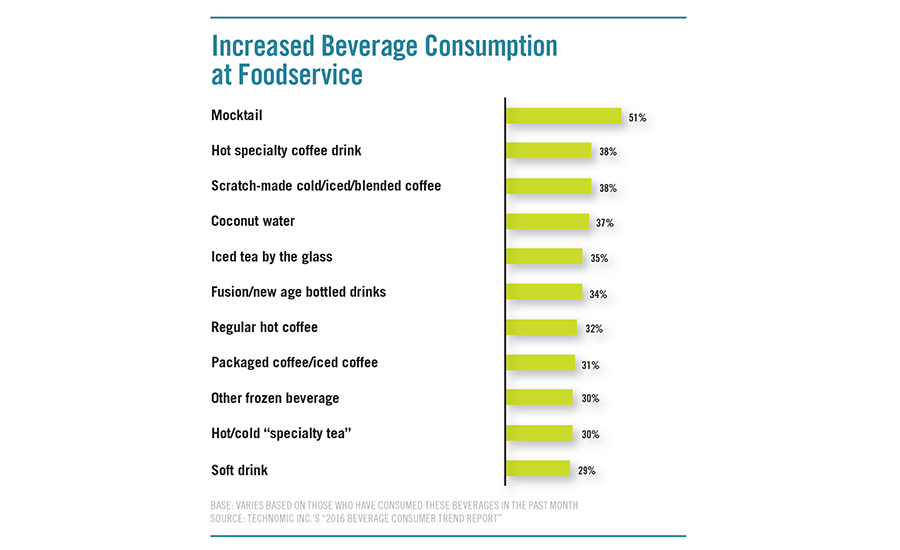Non-alcohol beverages are a vital part of foodservice. These items fetch high margins and can go a long way to boosting traffic and check averages, while helping to meet consumers’ changing needs and preferences.
Tea is one beverage already offered at many restaurants, and specialty teas and flavor variations are growing on both limited- and full-service chain menus. This is thanks to tea’s healthful profile, flavor flexibility and strength as a refreshing, low-calorie food complement. The ability to mix emerging beverage trends with current offerings like tea in a way that resonates with customers will be key to growing incremental beverage sales.
Sweet tea is a staple offered at most restaurants, while green and chai teas continue to trend upward when comparing menu data from 2014. At top LSR chains, iced tea is among the list of leading beverages, appearing on 70% of menus. Sweet tea is by far the most popular iced tea flavor (up 37%), followed by green tea (up 23%) and chai (up 9%).
On FSR menus, fruit flavors are increasing in popularity, more so than in limited service. Leading flavors are raspberry, peach, mango, strawberry and passion fruit. Operators also are experimenting with limited-time flavors to offer consumers more unique and often seasonal options. Au Bon Pain recently rolled out its fall menu, which features a Pumpkin Chai Latte with pumpkin spice.
With the explosion of customization, guests want to be in charge of the flavors in their drinks. In fact, consumers tend to be more likely to add flavor shots to their beverages at foodservice than at home, likely because foodservice has more options. Giving guests the ability to tailor their drinks by temperature (hot or iced), sweetness, flavor or even with toppings encourages drink purchases. One recent example is Argo Tea’s launch of build-your-own kombucha—a drink with organic probiotic cultures to aid digestion. Customers choose from Classic Black or Green Ginger tea and select a flavor add-on. Providing the chance to customize gives guests a unique, differentiated experience and offers items that can’t be replicated at home.
Tea’s healthy reputation can bring functional, health-halo attributes to specialty drinks and mocktails. Refreshing, slightly caffeinated mocktails can feature muddled fruits and fruit juices, like Starbucks’ Teavana Shaken Berry Sangria Herbal Tea. The drink combines Teavana Iced Passion Tango Tea and apple juice with berry flavors and features real blackberries and orange slices.
Beyond fruits, matcha (powdered green tea) also provides a chance to offer drinks with functional benefits. Aroma Espresso Bar earlier this year launched a Matcha Latte, available hot or iced. But, look for the increasingly trendy matcha green tea powder in new applications, such as fizzy matcha iced teas, matcha chai teas and matcha hot chocolate drinks. Adding these items to the menu provides more options for the 37% of consumers who say restaurants should offer healthier beverages.
Tea provides just one format for offering customization, healthful drinks and specialty beverages, such as mocktails. Incorporating these trends into existing offerings beyond tea can meet consumer needs and help boost sales for any foodservice operator.
Originally appeared in the November, 2016 issue of Prepared Foods as Time for Tea.
